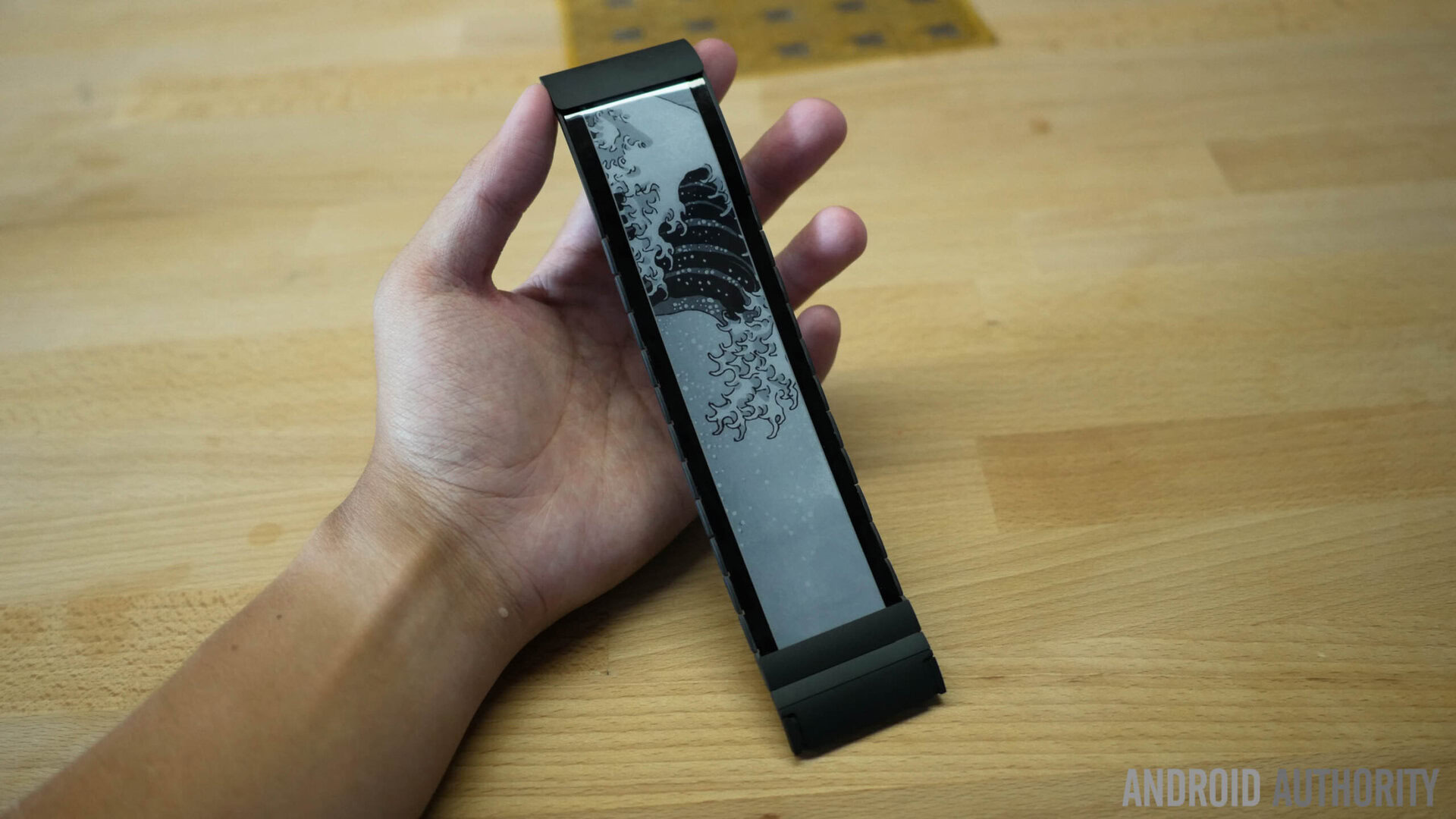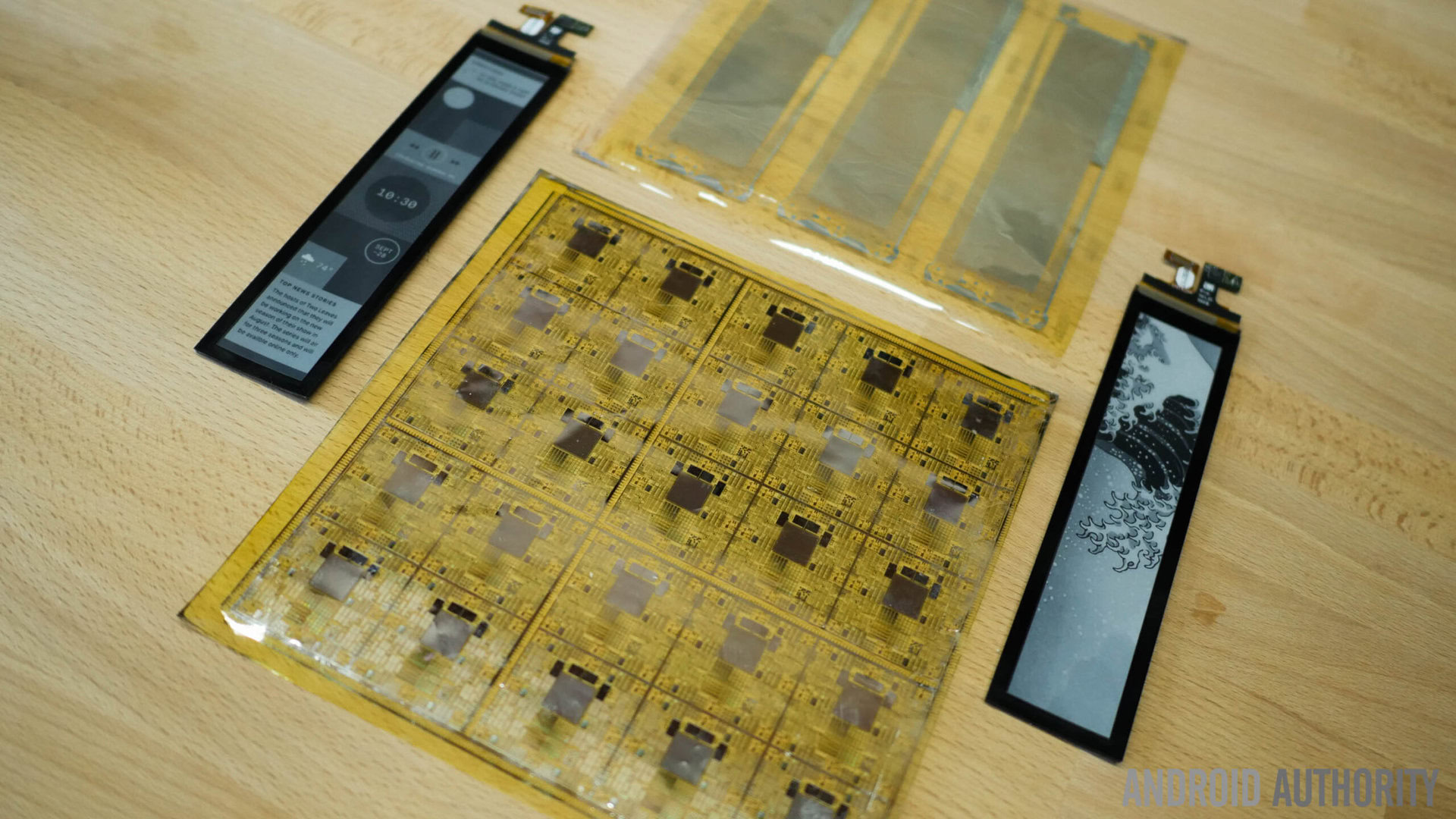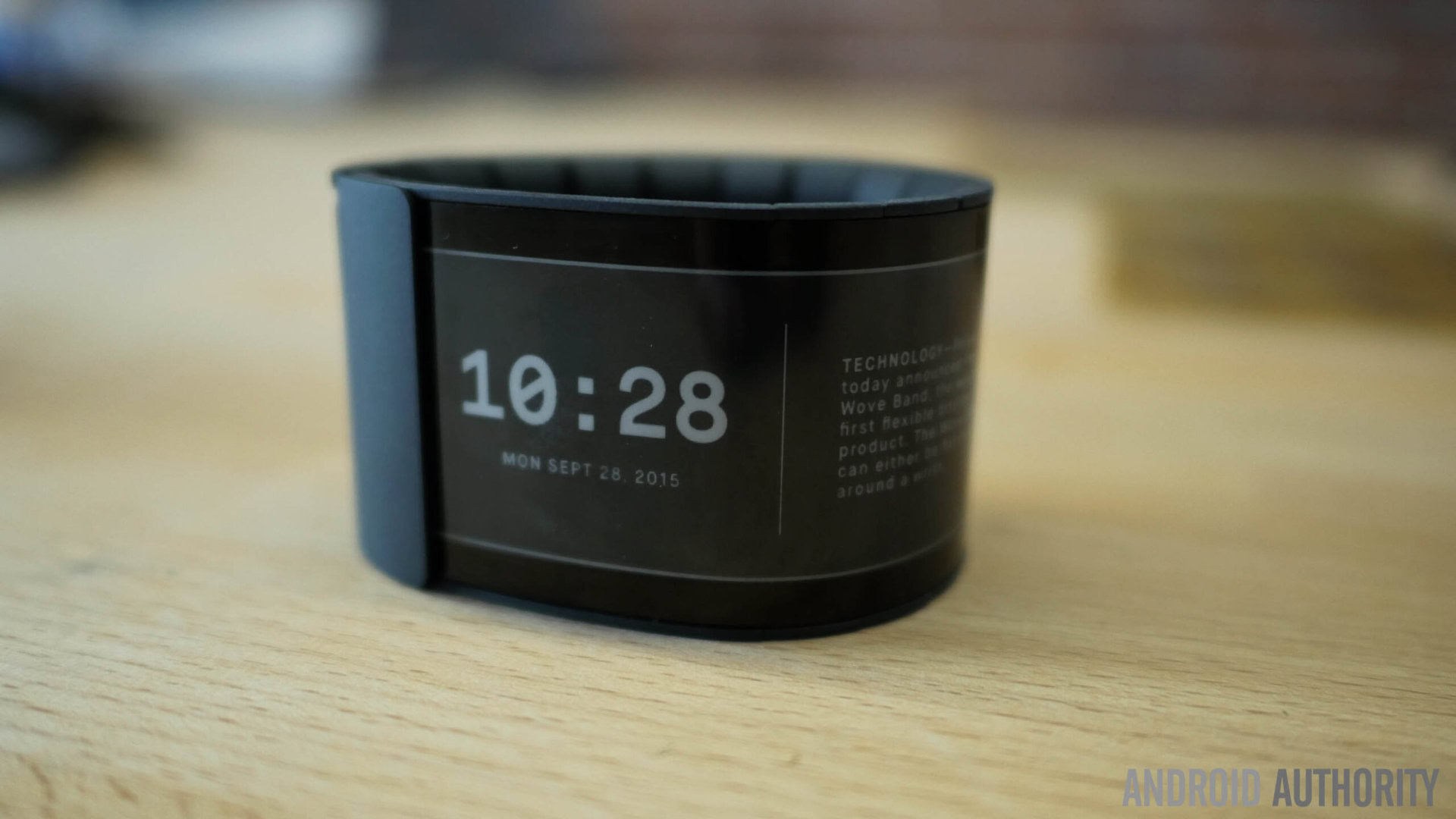Affiliate links on Android Authority may earn us a commission. Learn more.
Video: Wove band puts a truly flexible e-ink display on your wrist

The smartwatch ecosystem is growing fast, but not all wearables need to adhere to the watch form factor in order to be successful. And while devices from companies like Fitbit, Samsung, or Microsoft have shown that people love smart bands, current products are rather basic, and there’s clearly a lot of room for innovation in this field.
Enter Wove, the product of the decade-old flexible electronics specialist Polyera. Unlike devices like the Samsung Gear Fit or LG’s G Flex smartphones, which feature curved displays fixed in place by non-flexible glass, the Wove band is actually flexible and can be bent over and over without damage, thanks to a technology called Digital Fabric. That is why Polyera bills Wove as the world’s first truly flexible display product.

We were given a sneak preview of a very early version of the Wove band last week, and after seeing the concept, we’re definitely excited for it. It’s important to note that Wove isn’t ready for the market just yet, as Polyera expects to ship the first prototypes in December with a wider release next year. As such, we were only allowed to share a few shots of an early version of the Wove today, with more details and more imagery to come in a future video.
Wove features an e-ink flexible display of 30mm x 156mm and 1040 x 200 resolution, with its surface totaling about five times the surface of a typical smartwatch display. The device is powered by a 1GHz Freescale Cortex A7 processor, 512MB of RAM, 4GB of storage, and a 230 mAh battery. Because it employs electronic ink (similar to Pebble products), which only consumes power during animations, you can expect excellent battery life.
Wove runs a modified version of Android and Polyera is keen to get developers, product designers, and even members of the public involved in the creation of an ecosystem of dedicated apps called “compositions.” To further this goal, the company will make available app creation tools based on Java (for Android developers), HTML5/CSS3/JS (web developers), or a graphical interface aimed at designers.

We look forward to learning more about this exciting new concept, and we will bring you another video showing the actual device in action later this week. Stay tuned!
[press]
Polyera Reveals Specs and Prototype Program for the Wove Band
San Francisco, USA – September 28th, 2015
Polyera, a leading flexible electronics company, today revealed the hardware and software specifications of the Wove Band and a program for artists, developers and designers to begin working with prototypes in December.
The Wove Band is a wearable device with a flexible display roughly five times the surface of a smartwatch.
Wove’s Android-based OS runs compositions, which are like apps, but made for wearing. Wove offers three ways to make compositions: a Java SDK for those familiar with Android development, a Web SDK for those familiar with HTML5/CSS3/JS, and a graphics tool for those familiar with image editing and graphic creation. With Wove’s creation tools, a wide range of people can make compositions that combine aesthetics and utility in entirely new ways.
Leading app and service partners from a range of categories are currently building compositions for Wove. In addition, a limited number of Wove 0.1 prototypes will be given to a select group of artists, developers and designers, beginning in December. Starting today, those interested in exploring Wove’s potential can apply on Wove.com. Wove will launch commercially in 2016.
[/press]